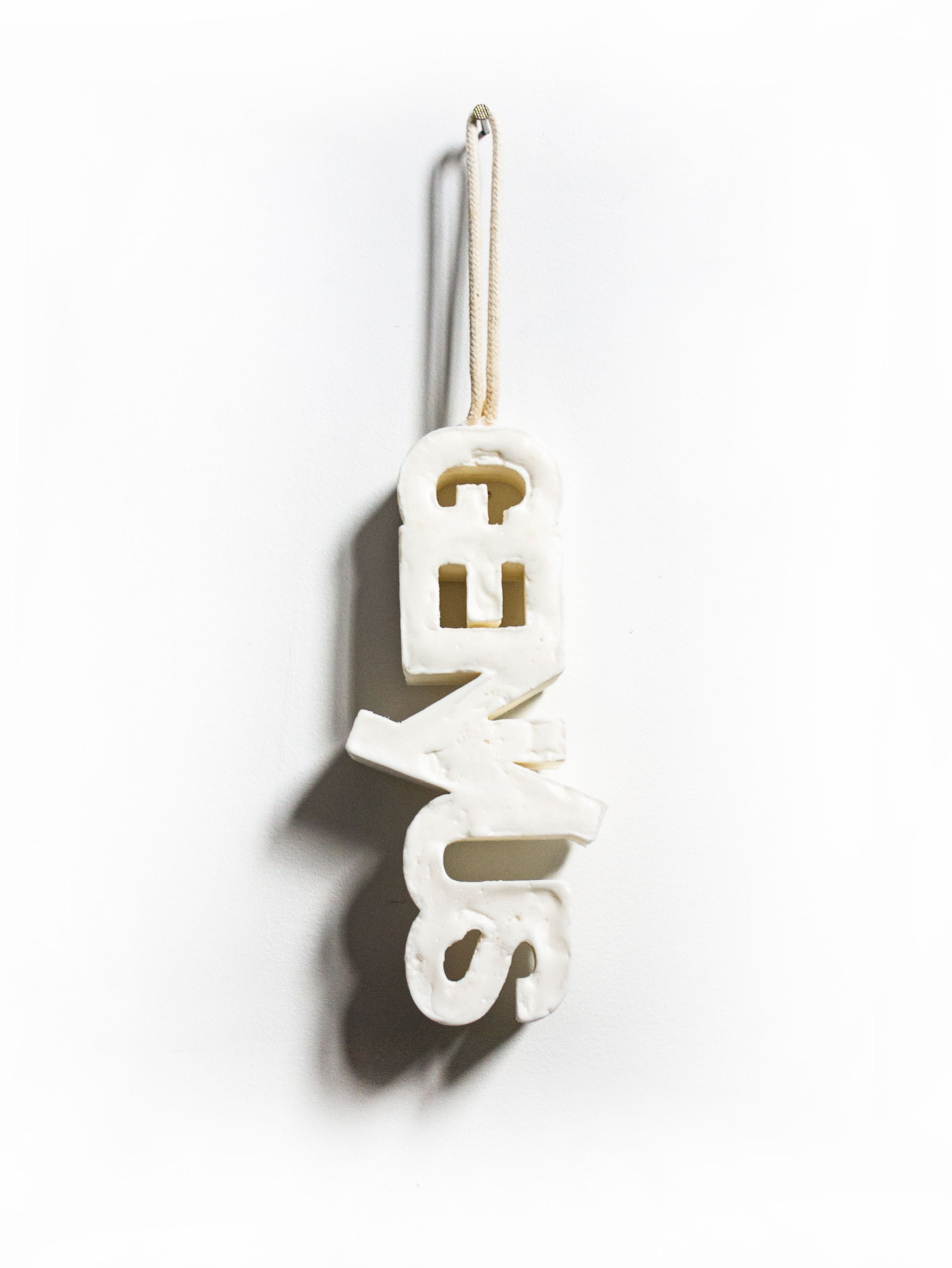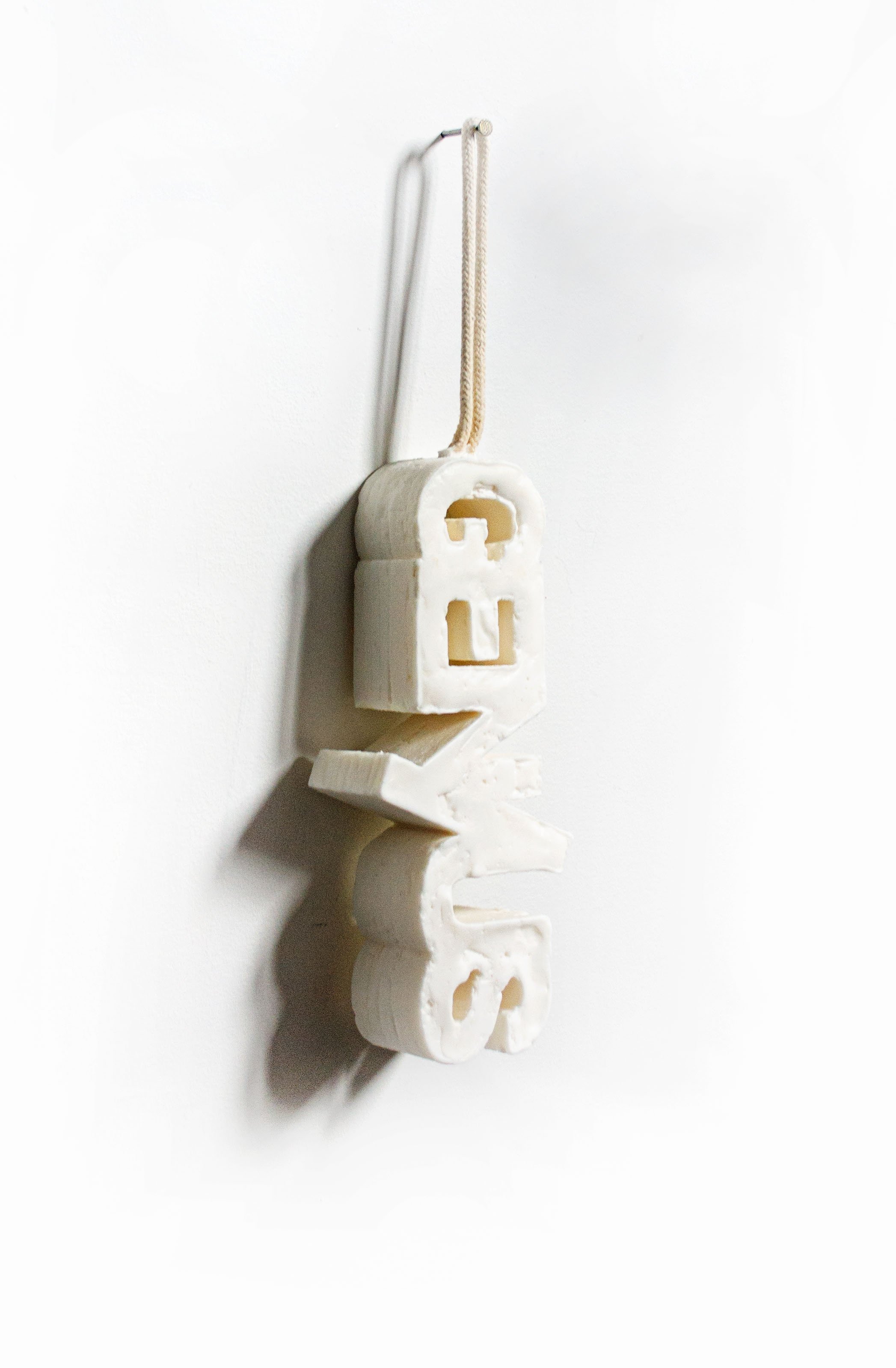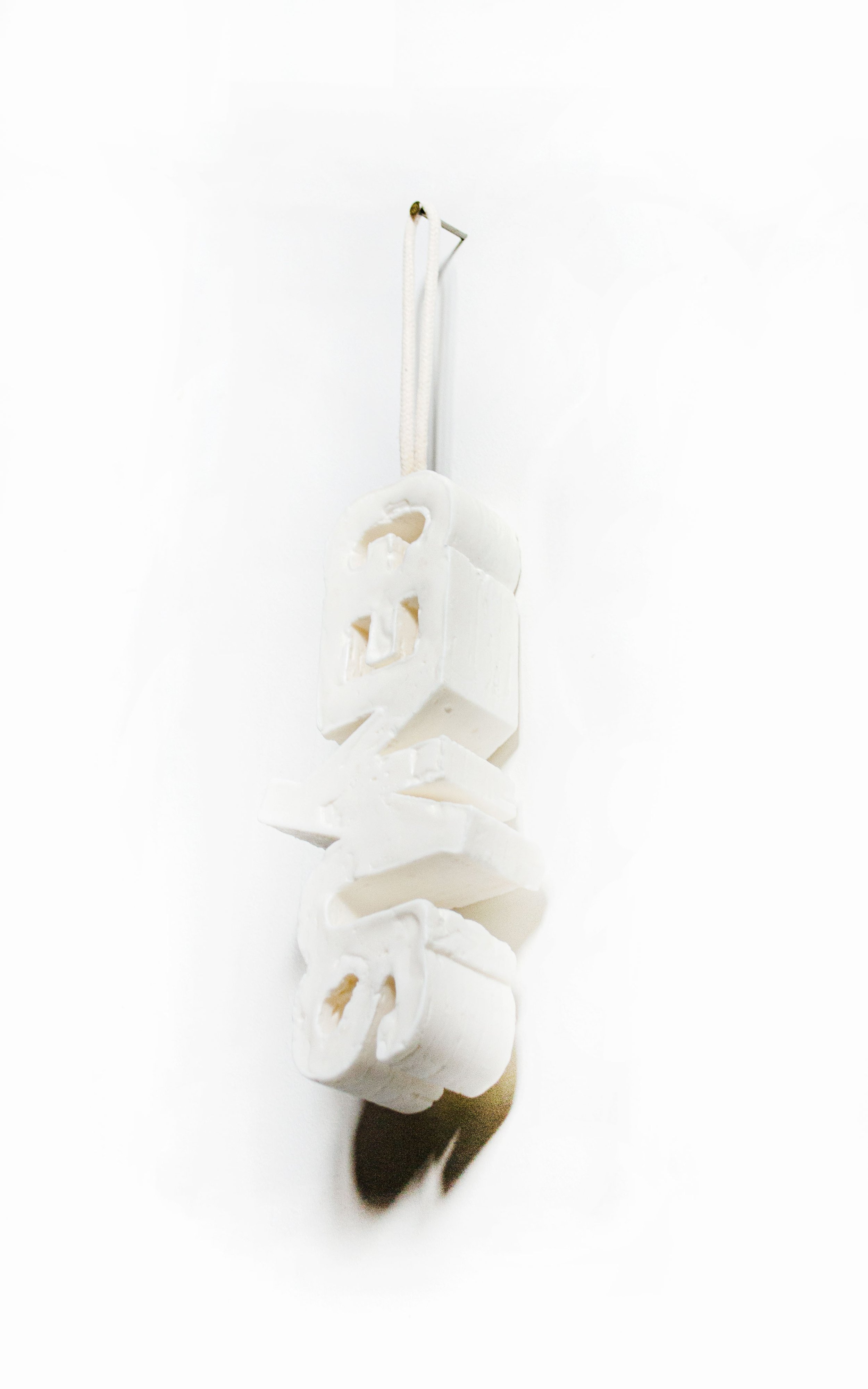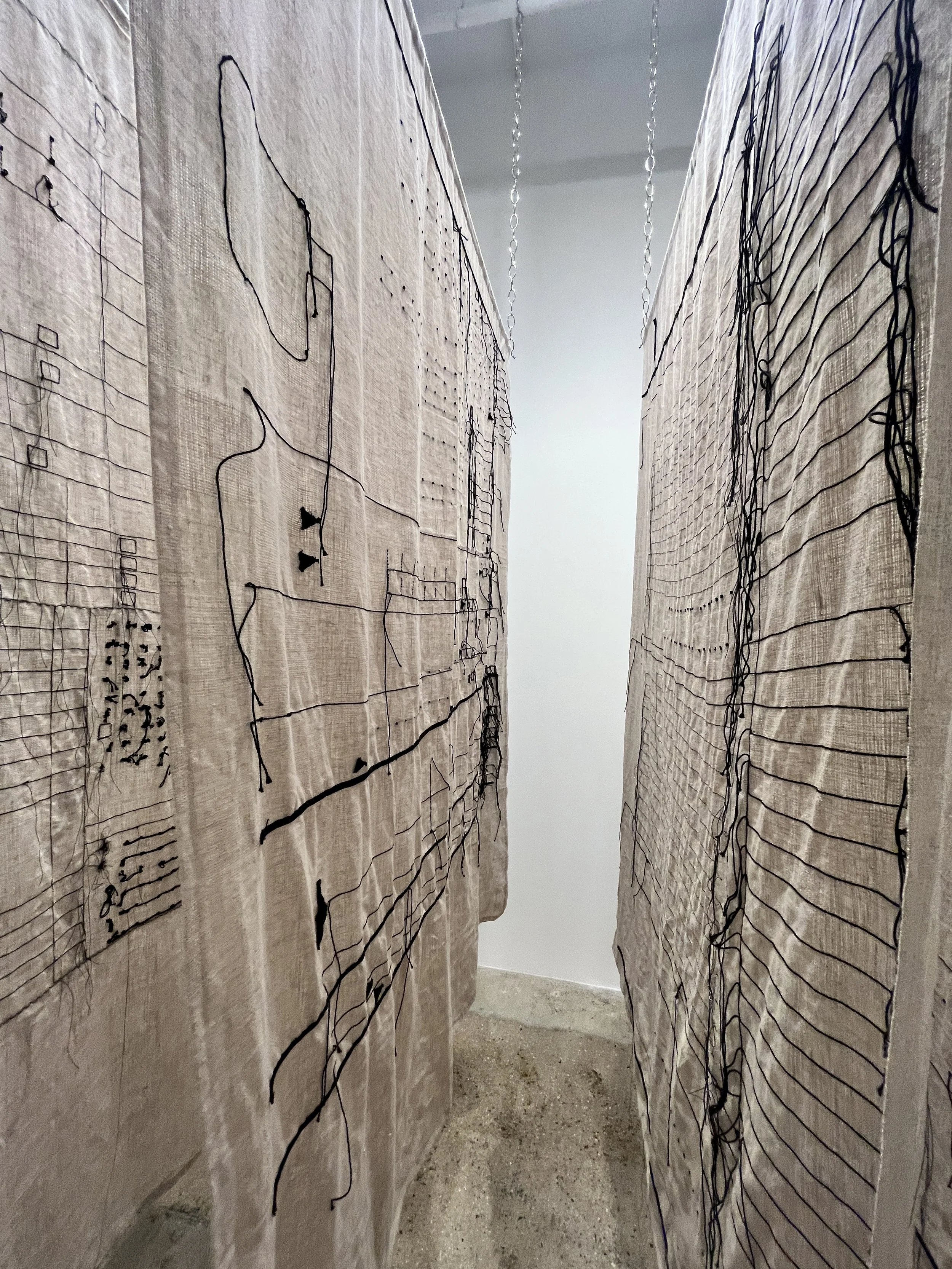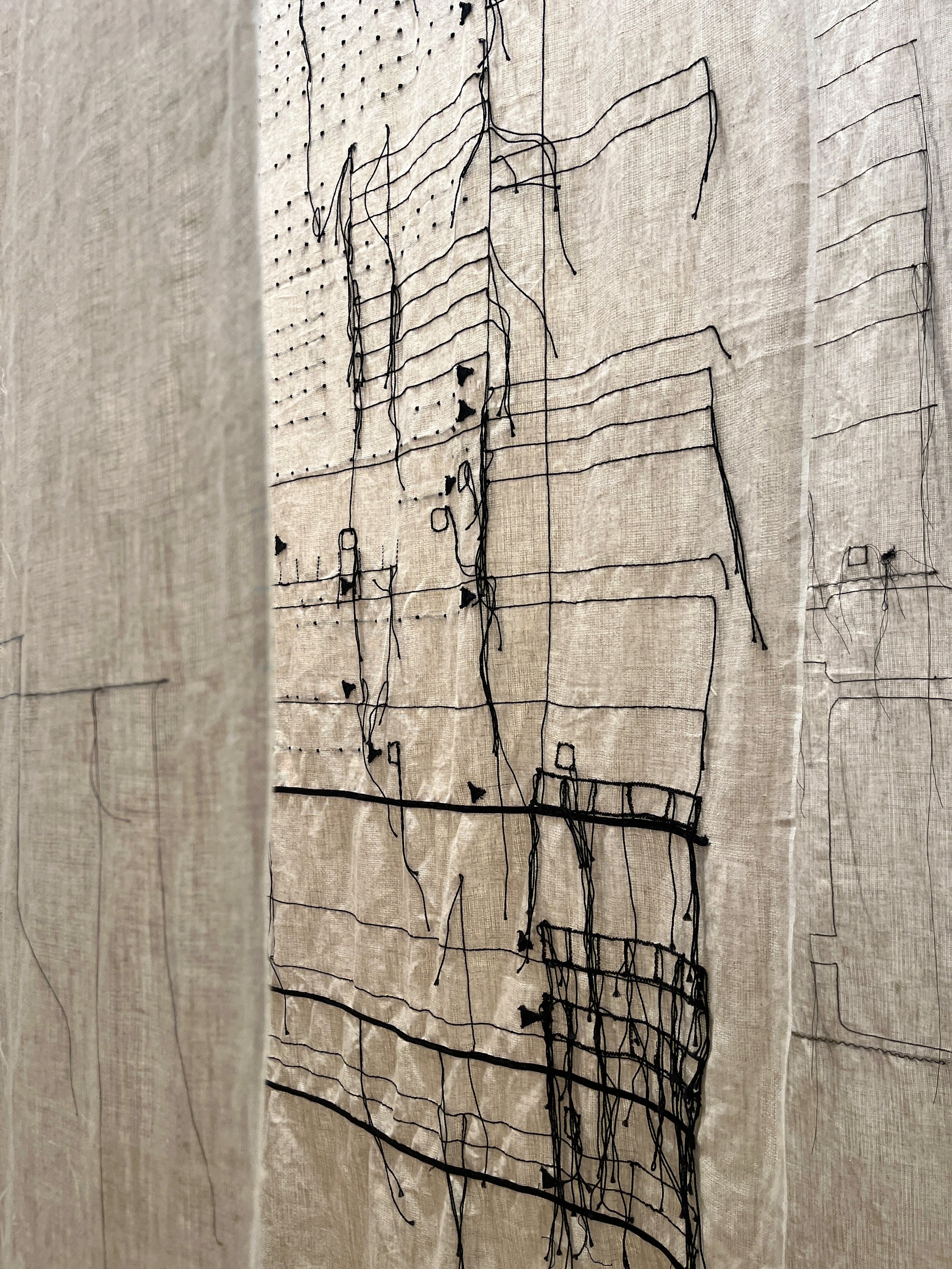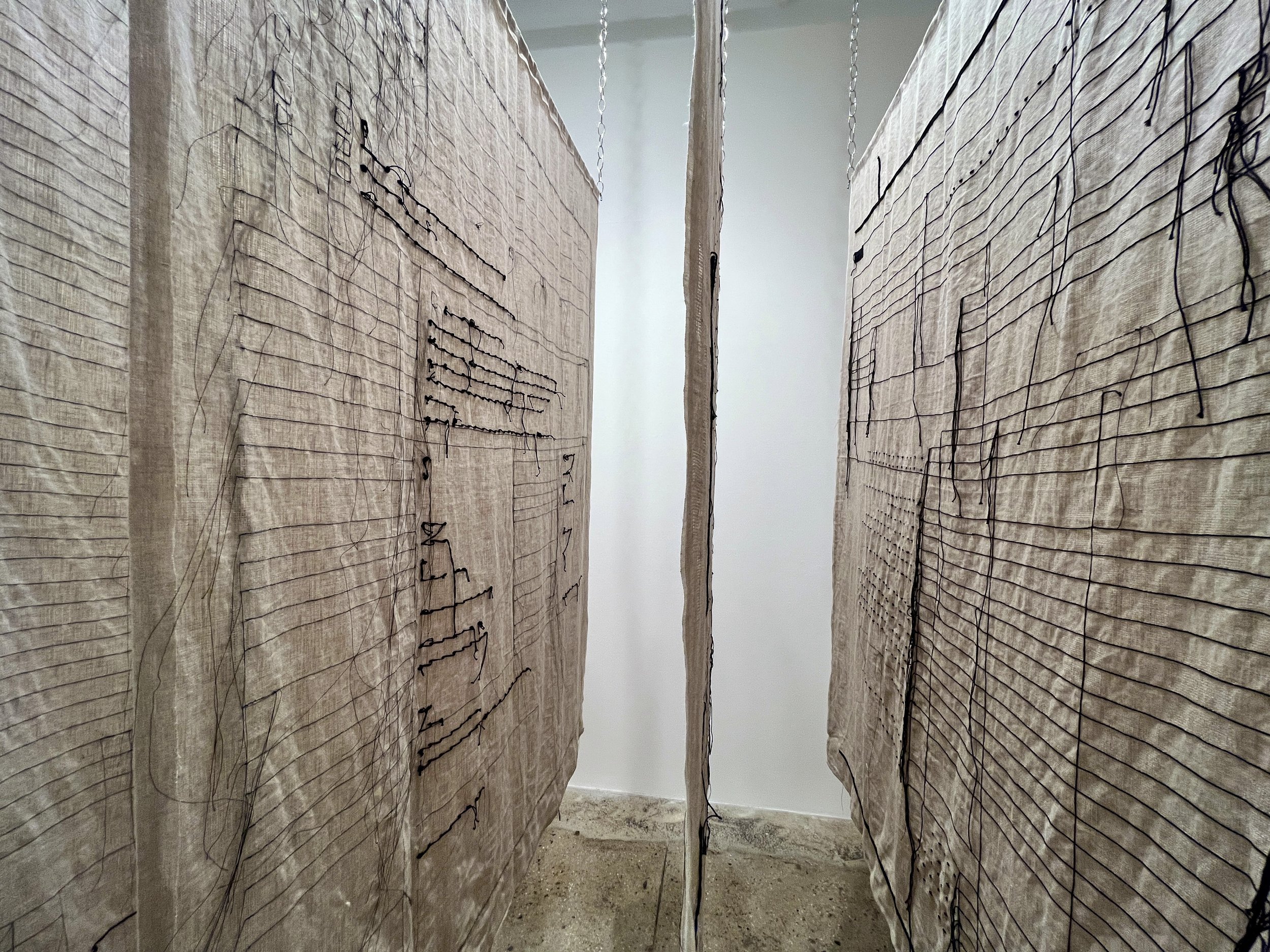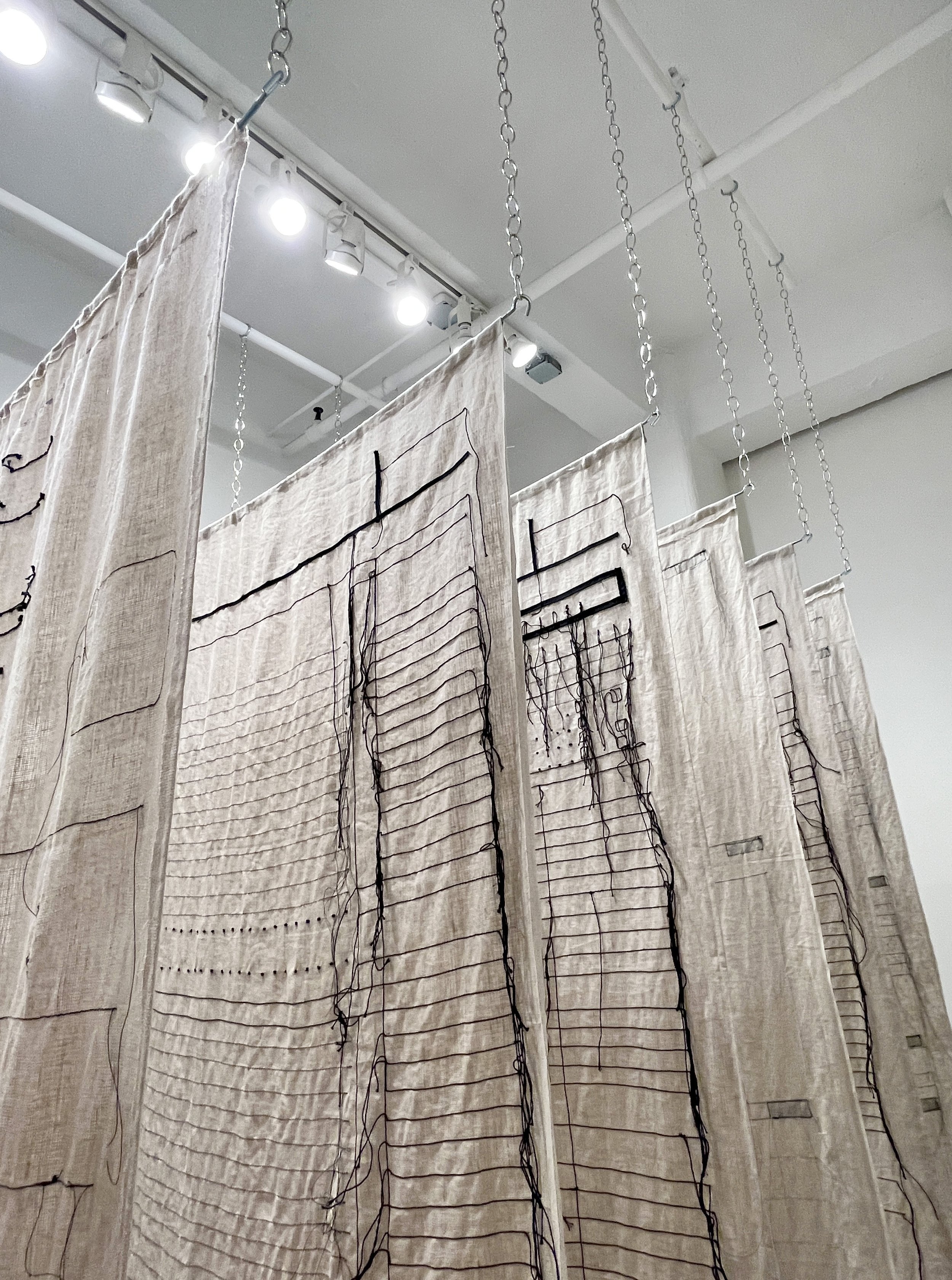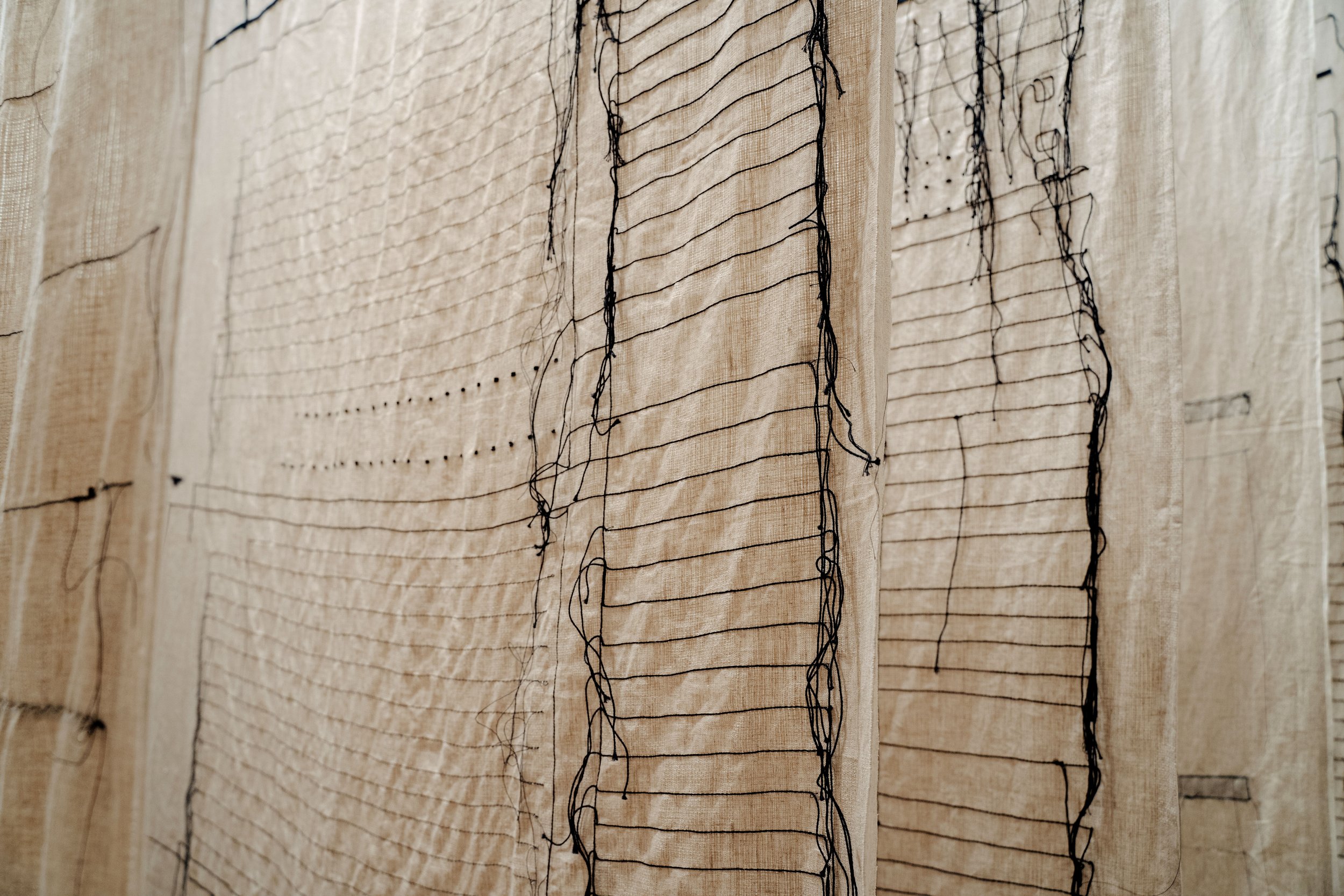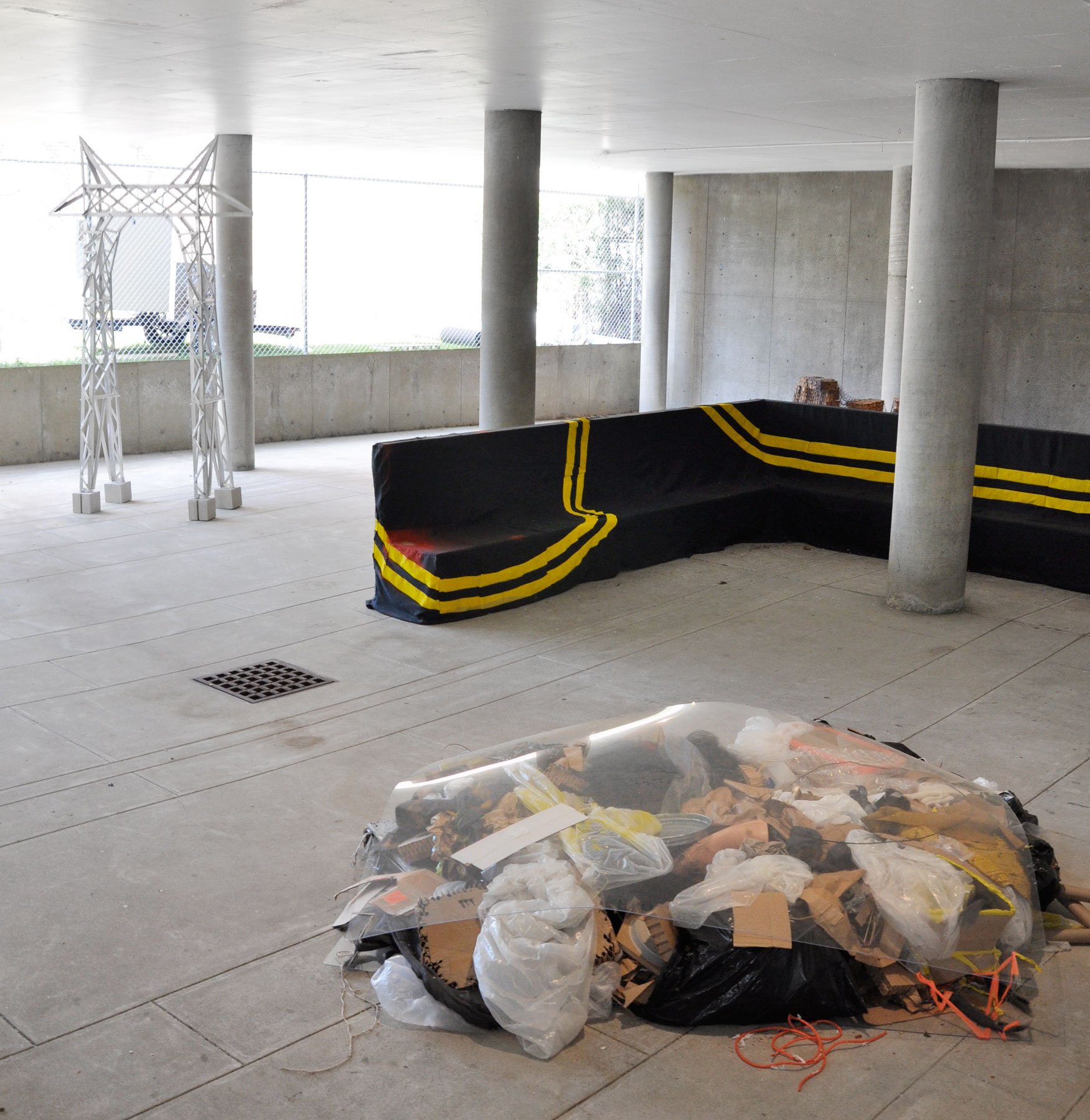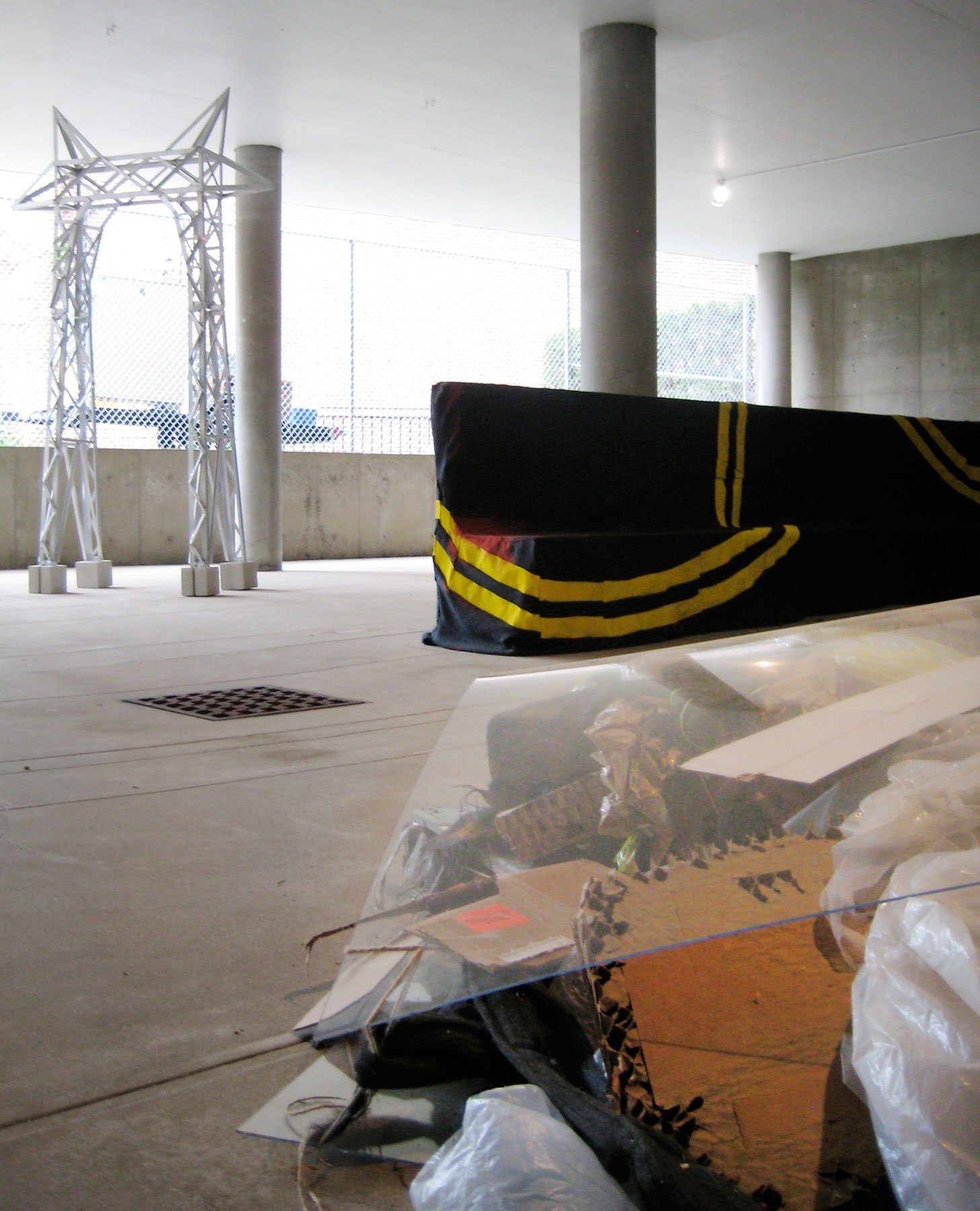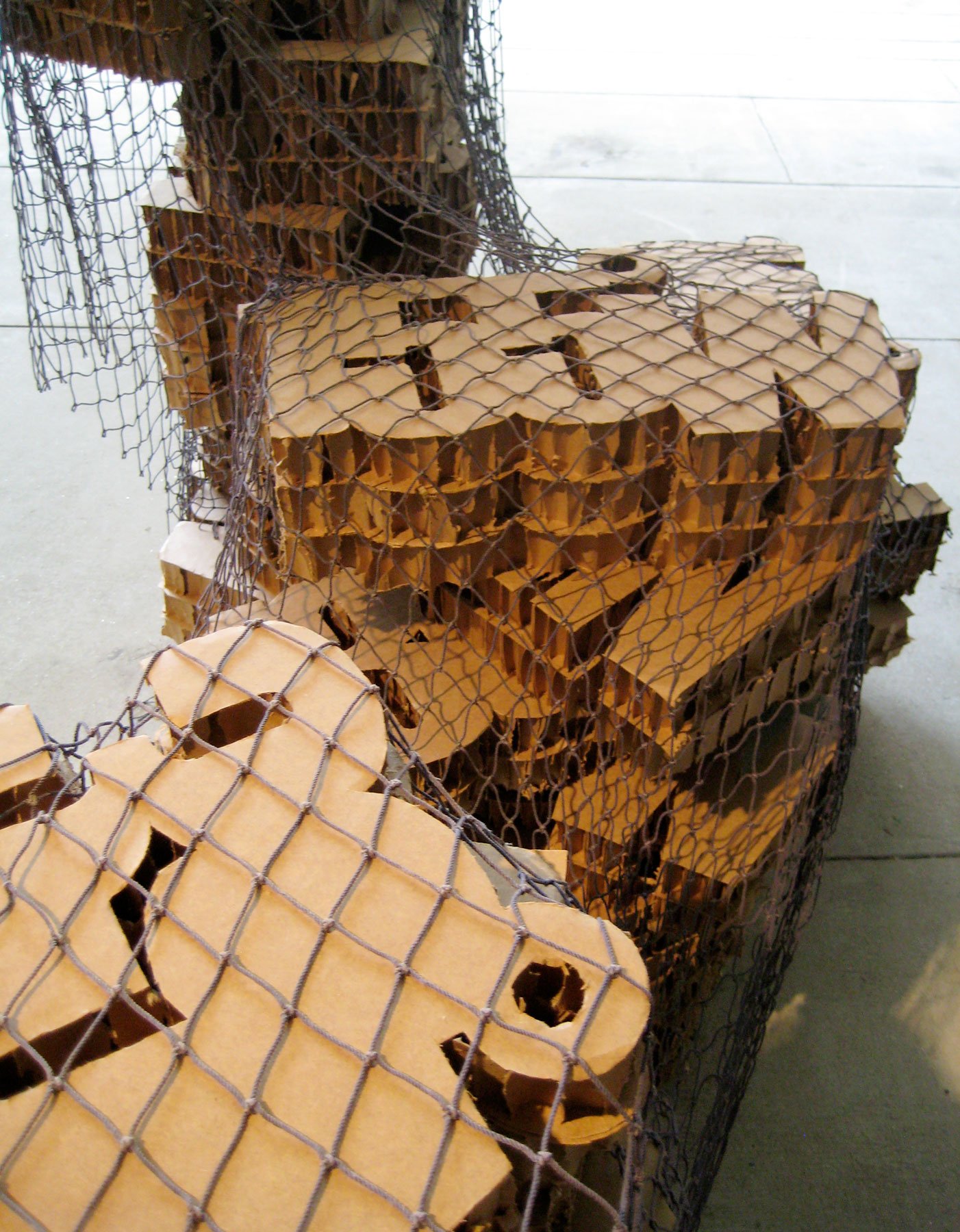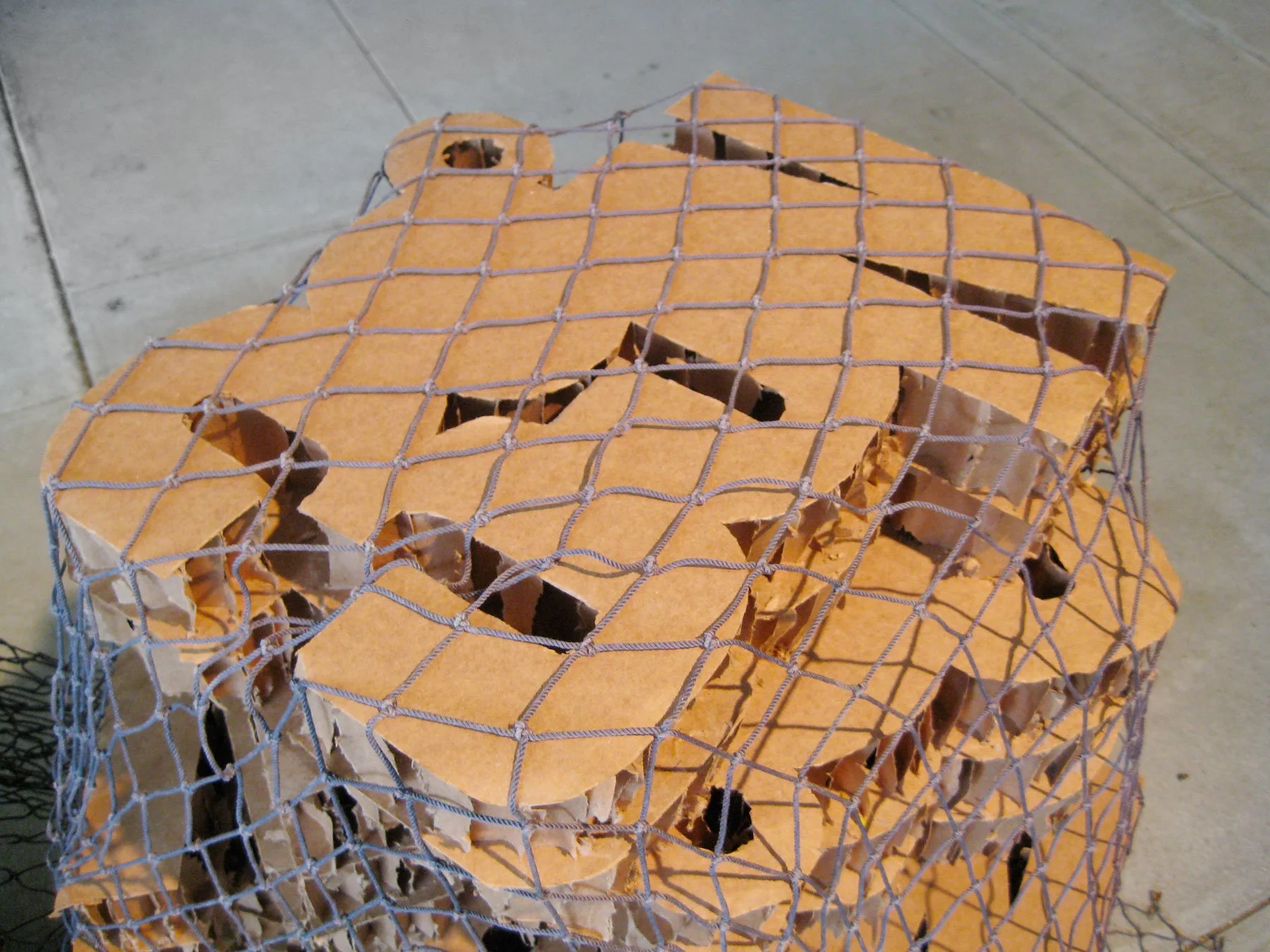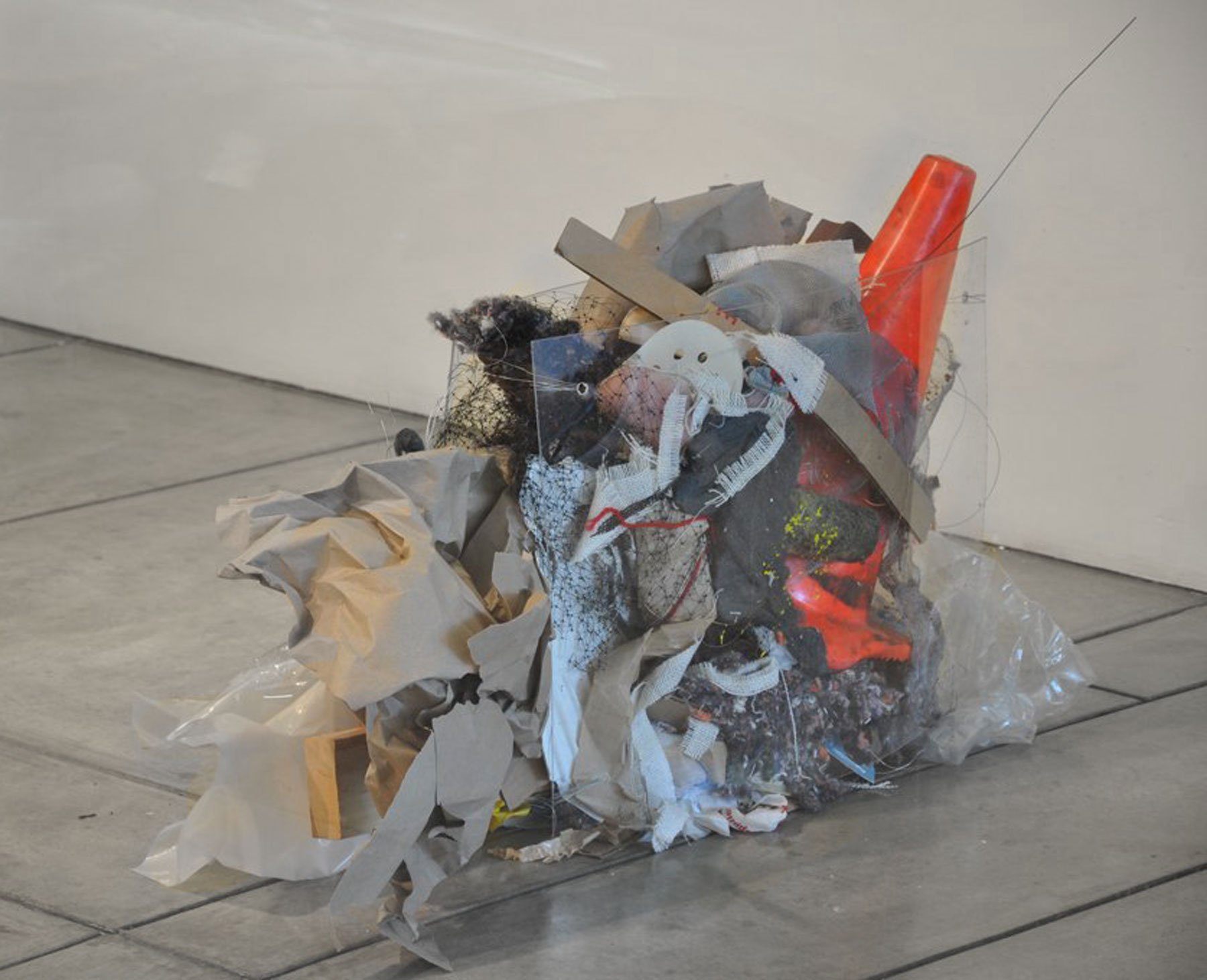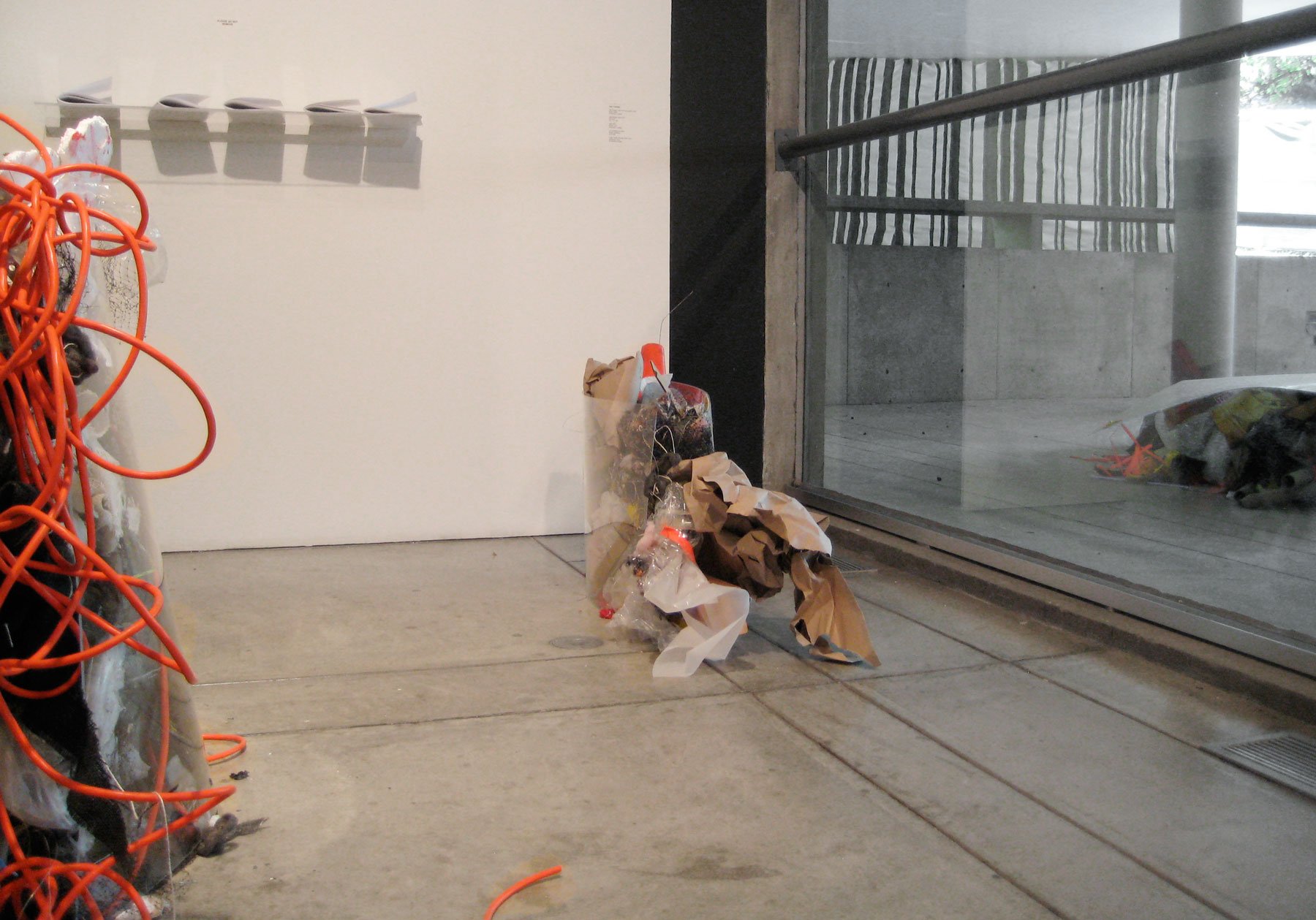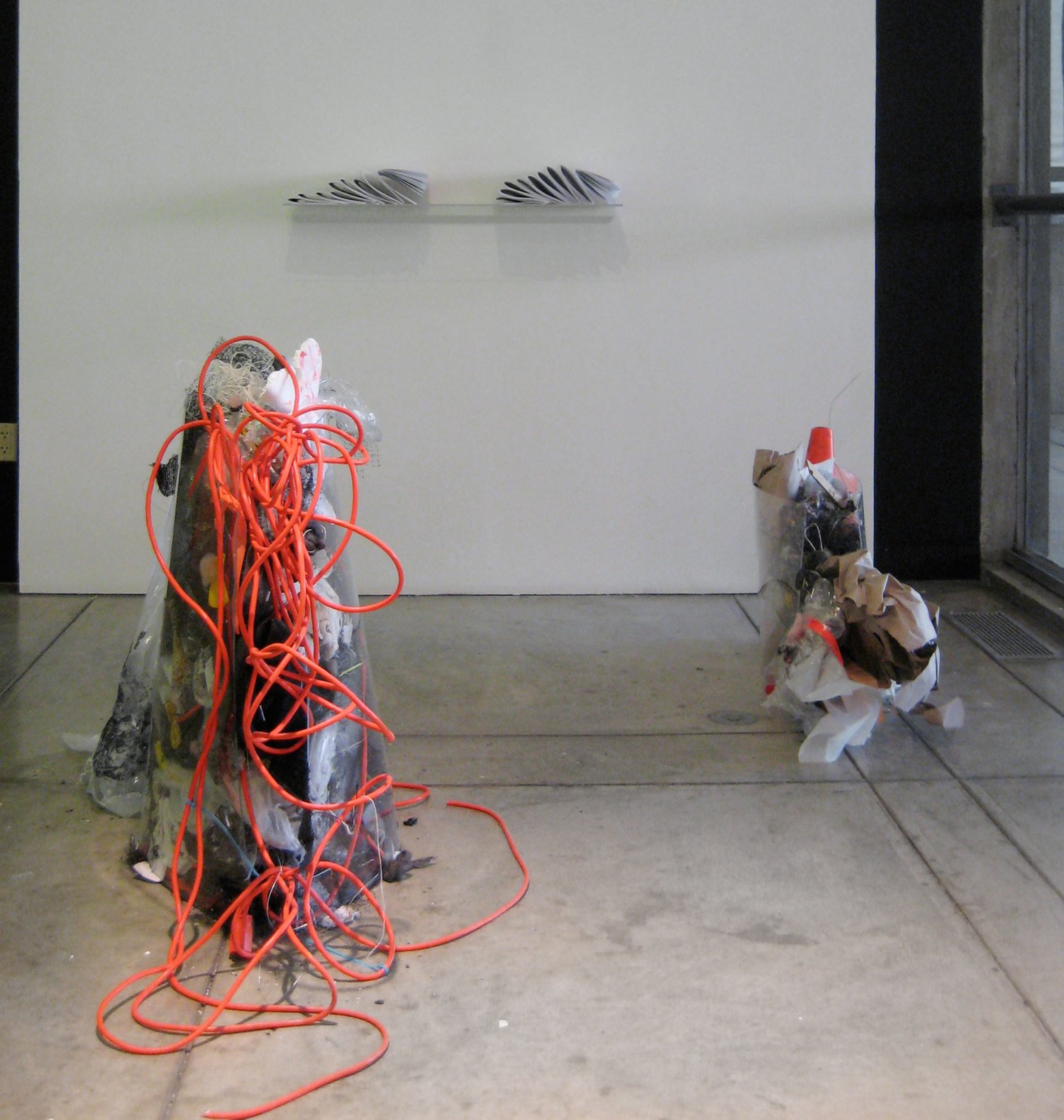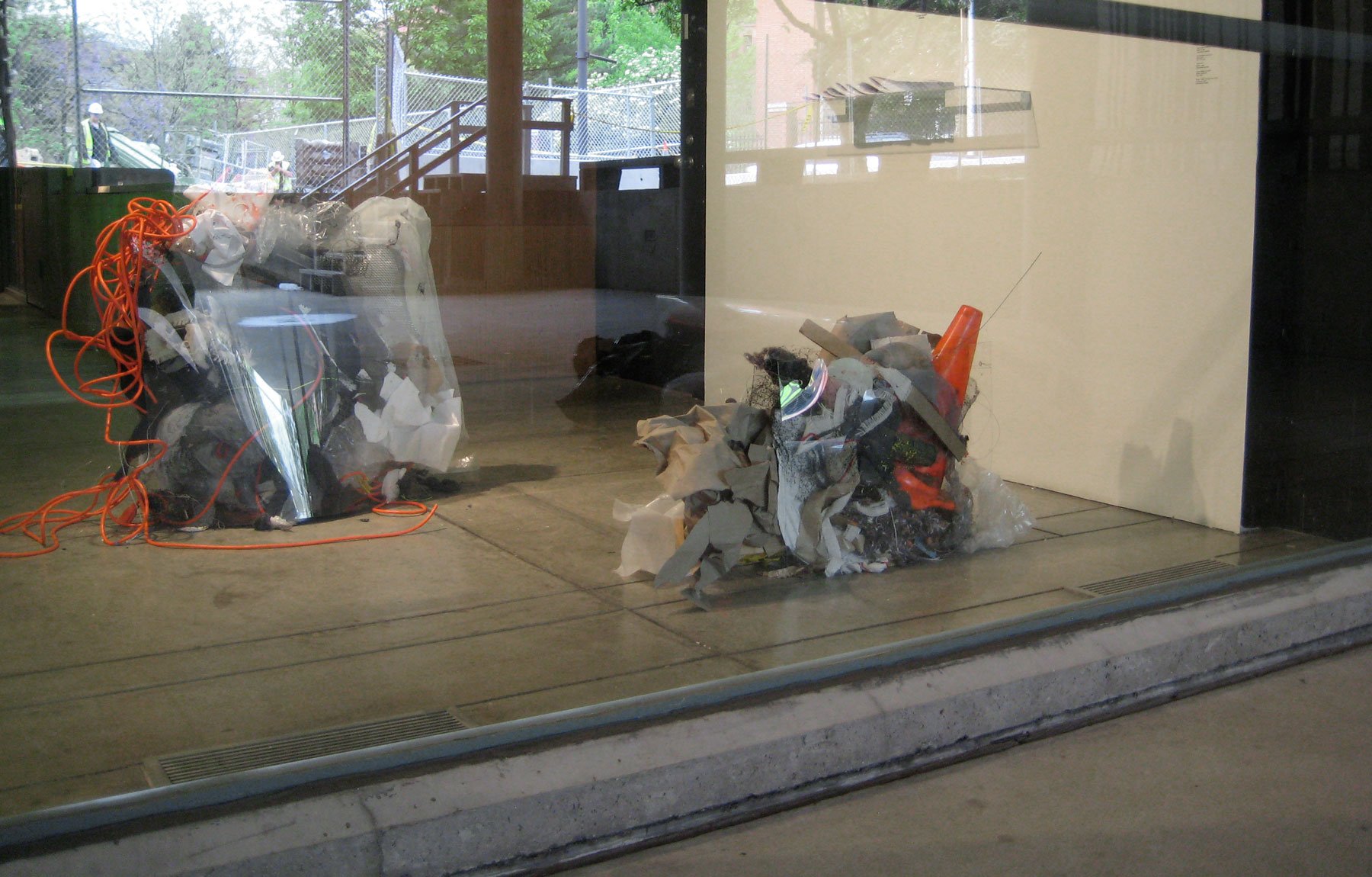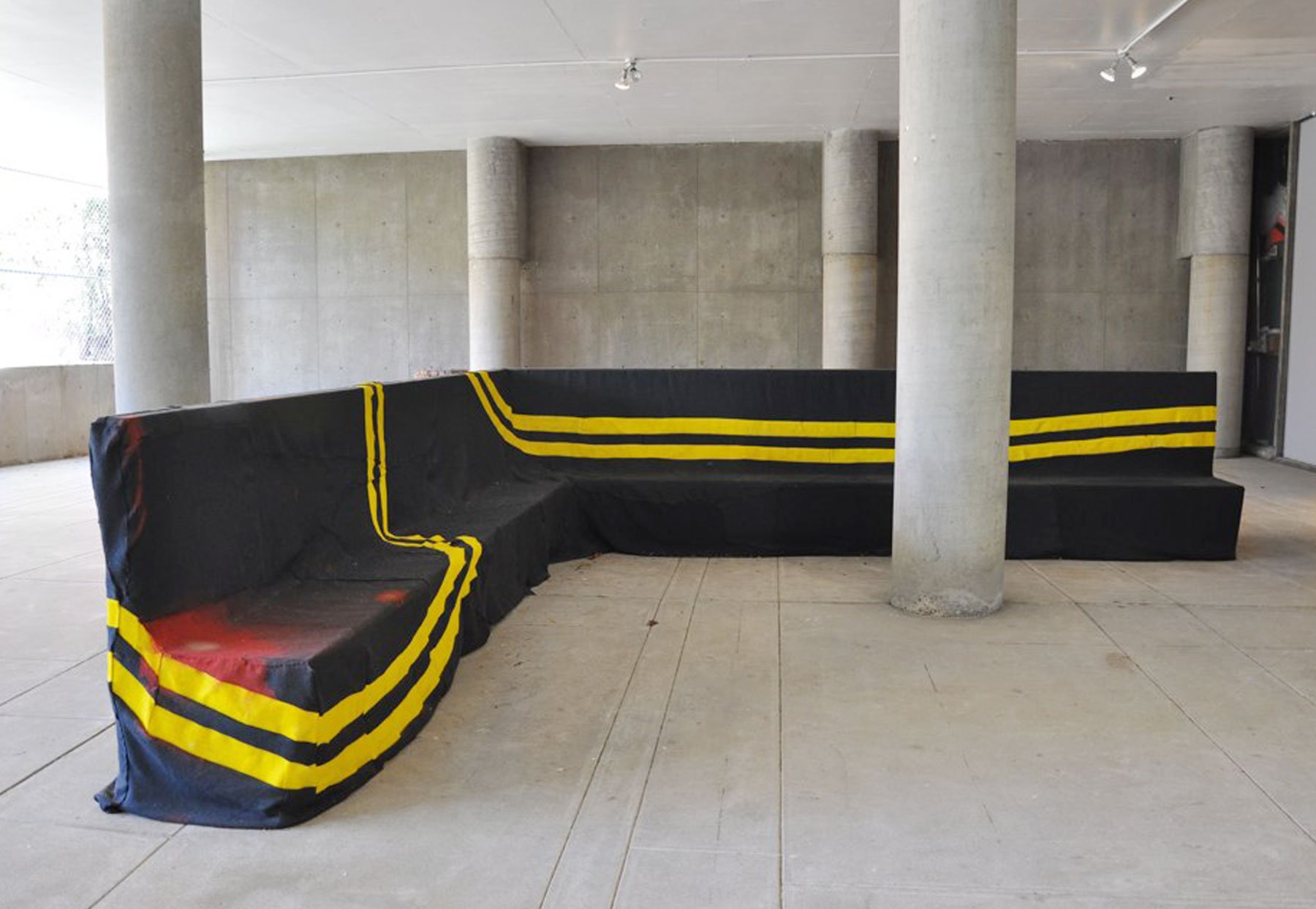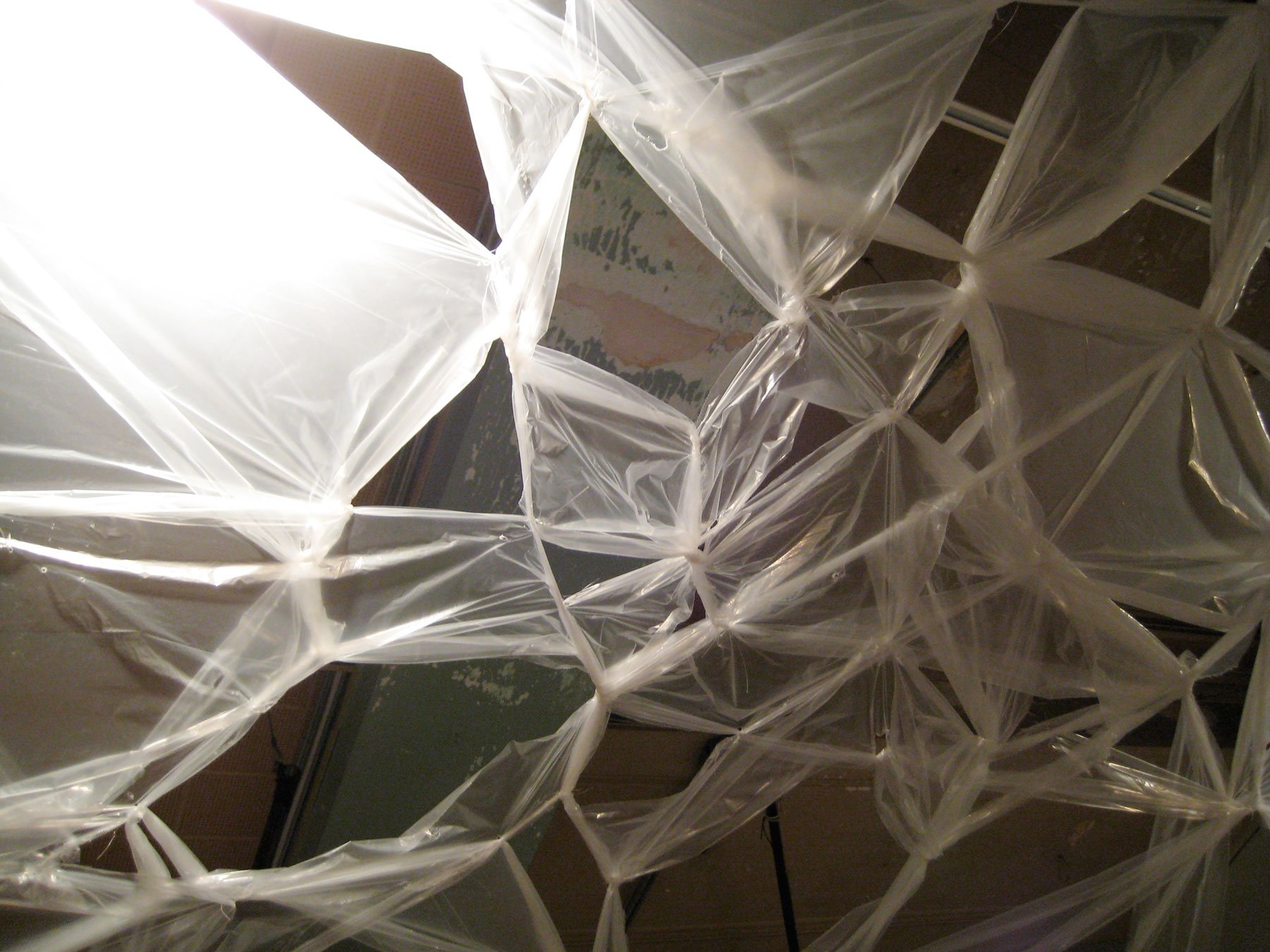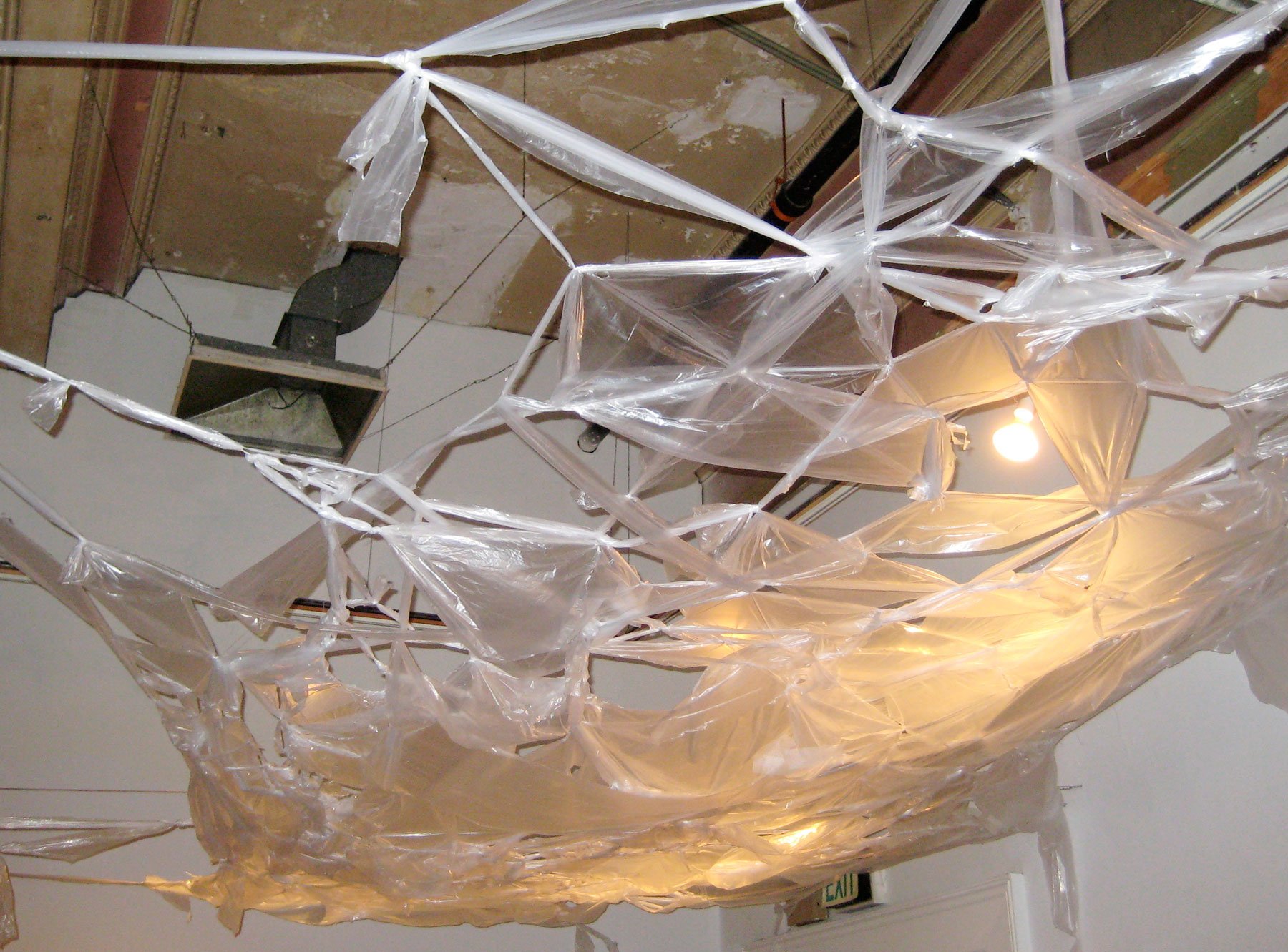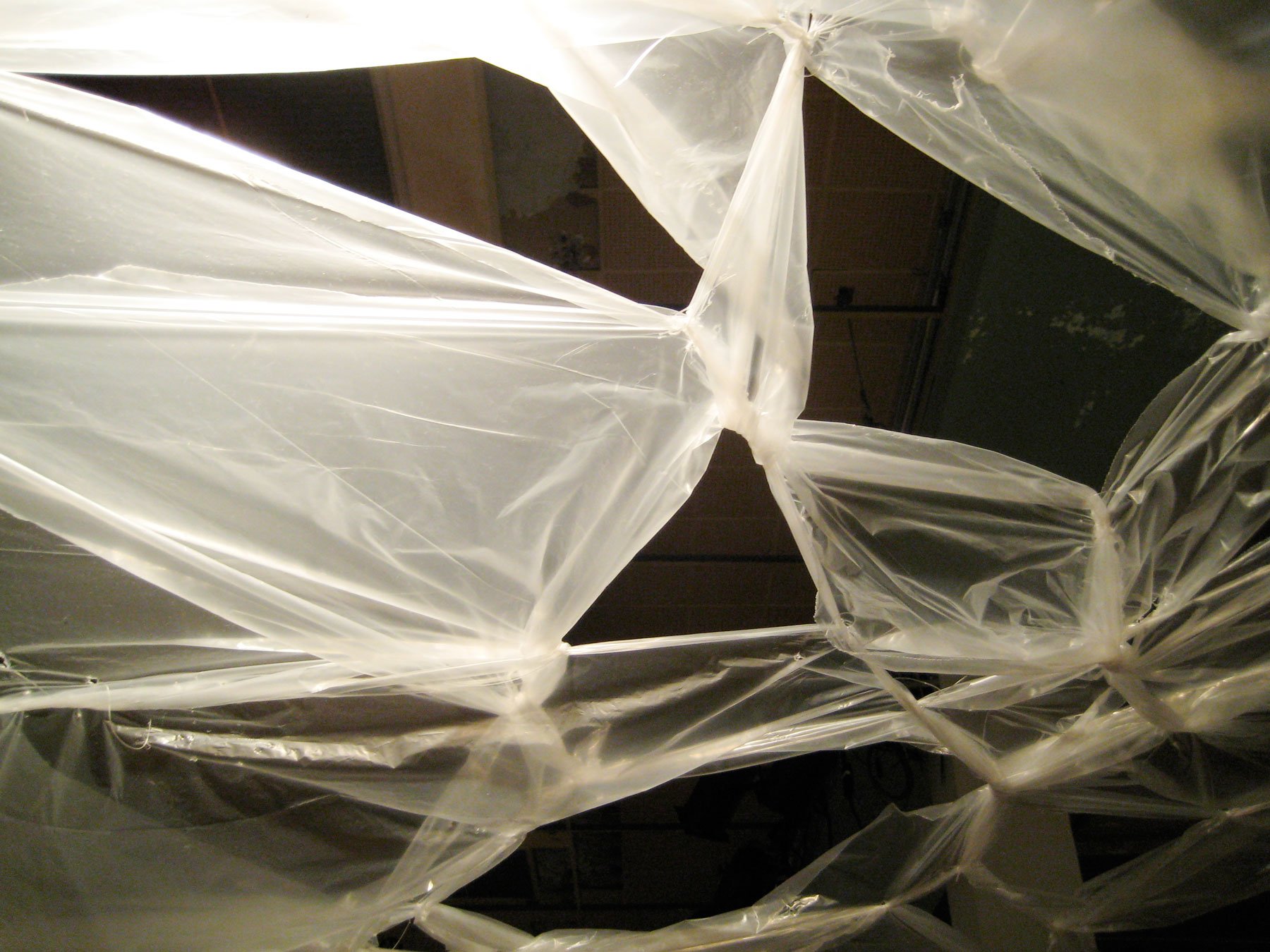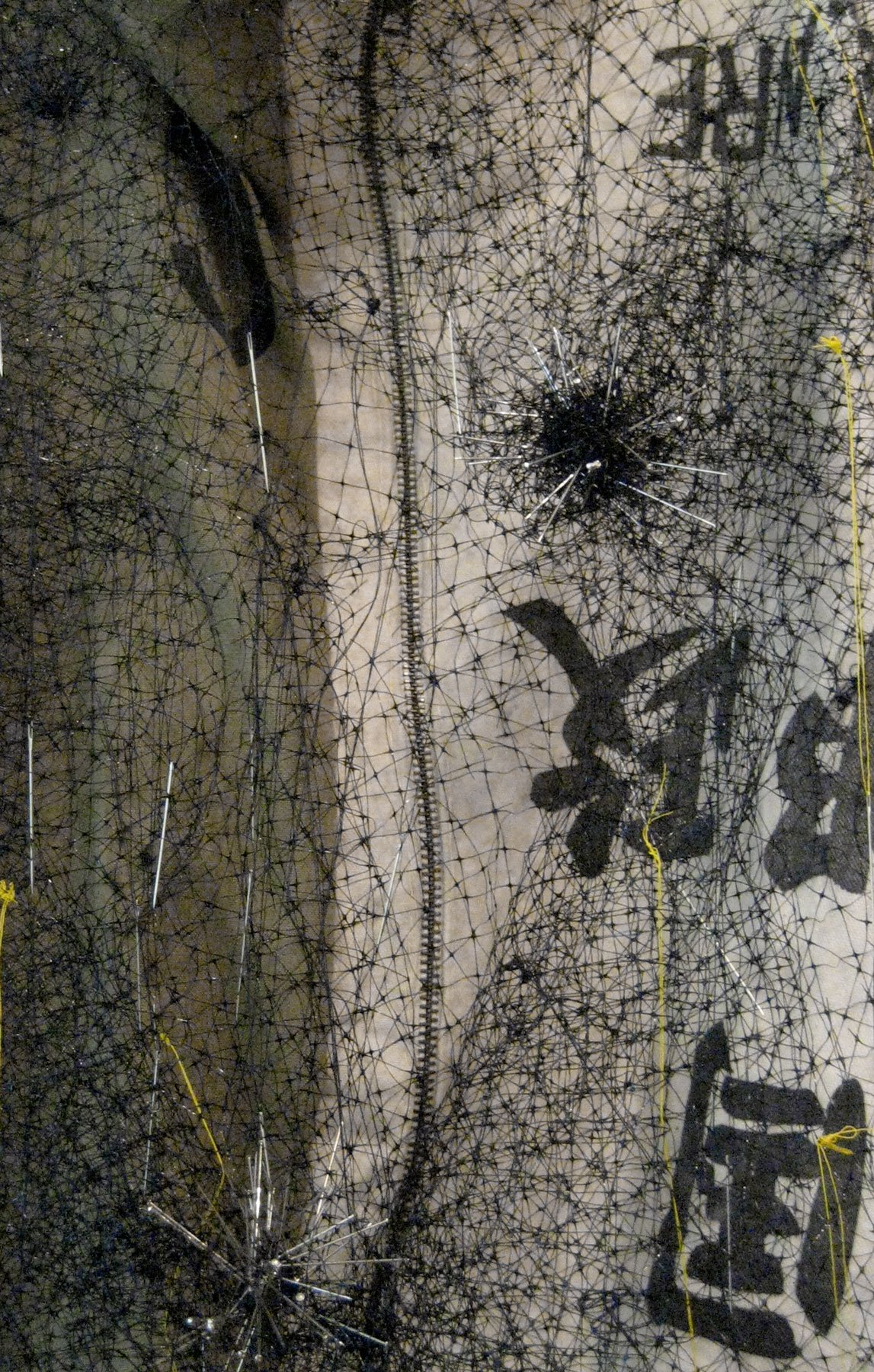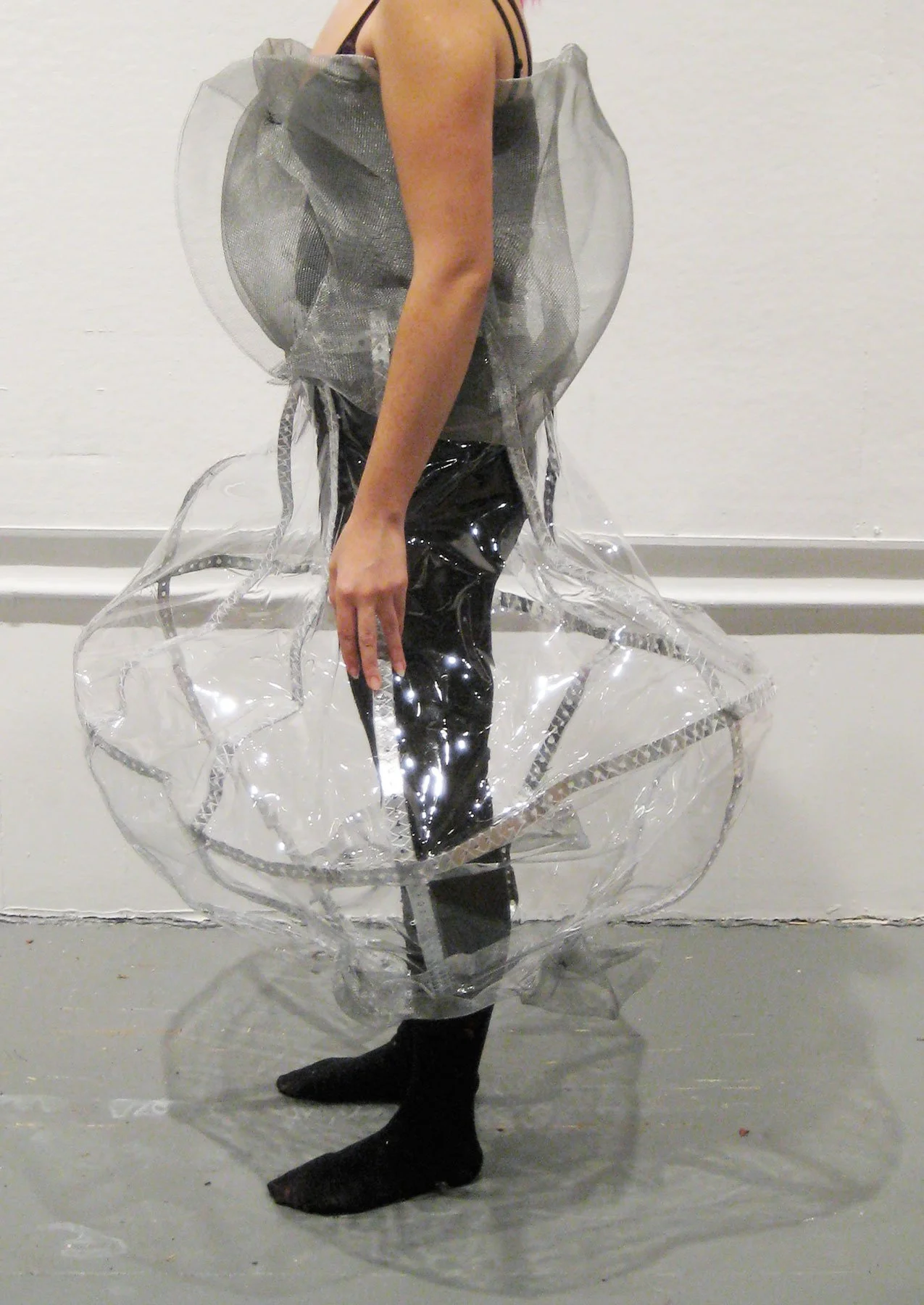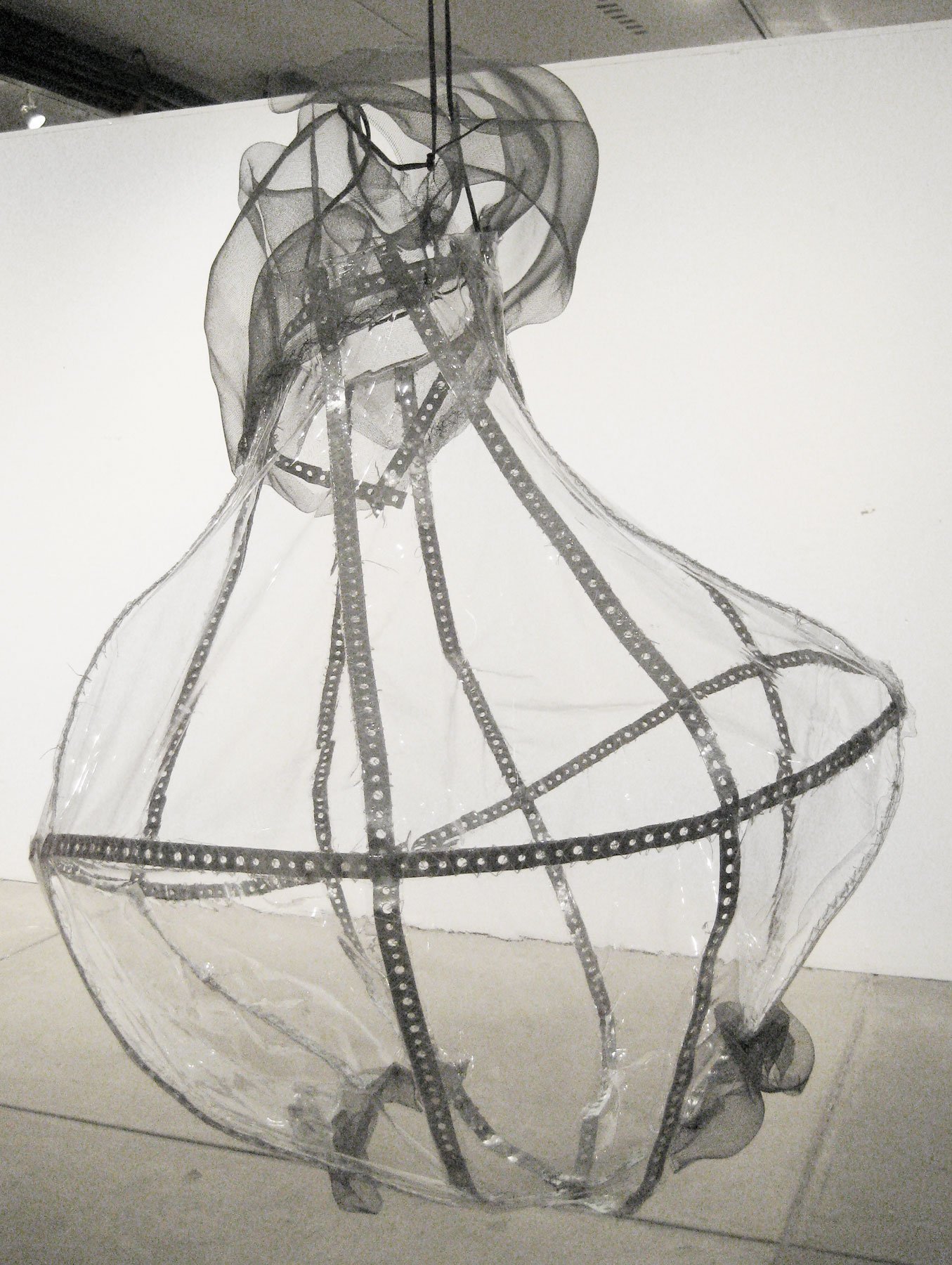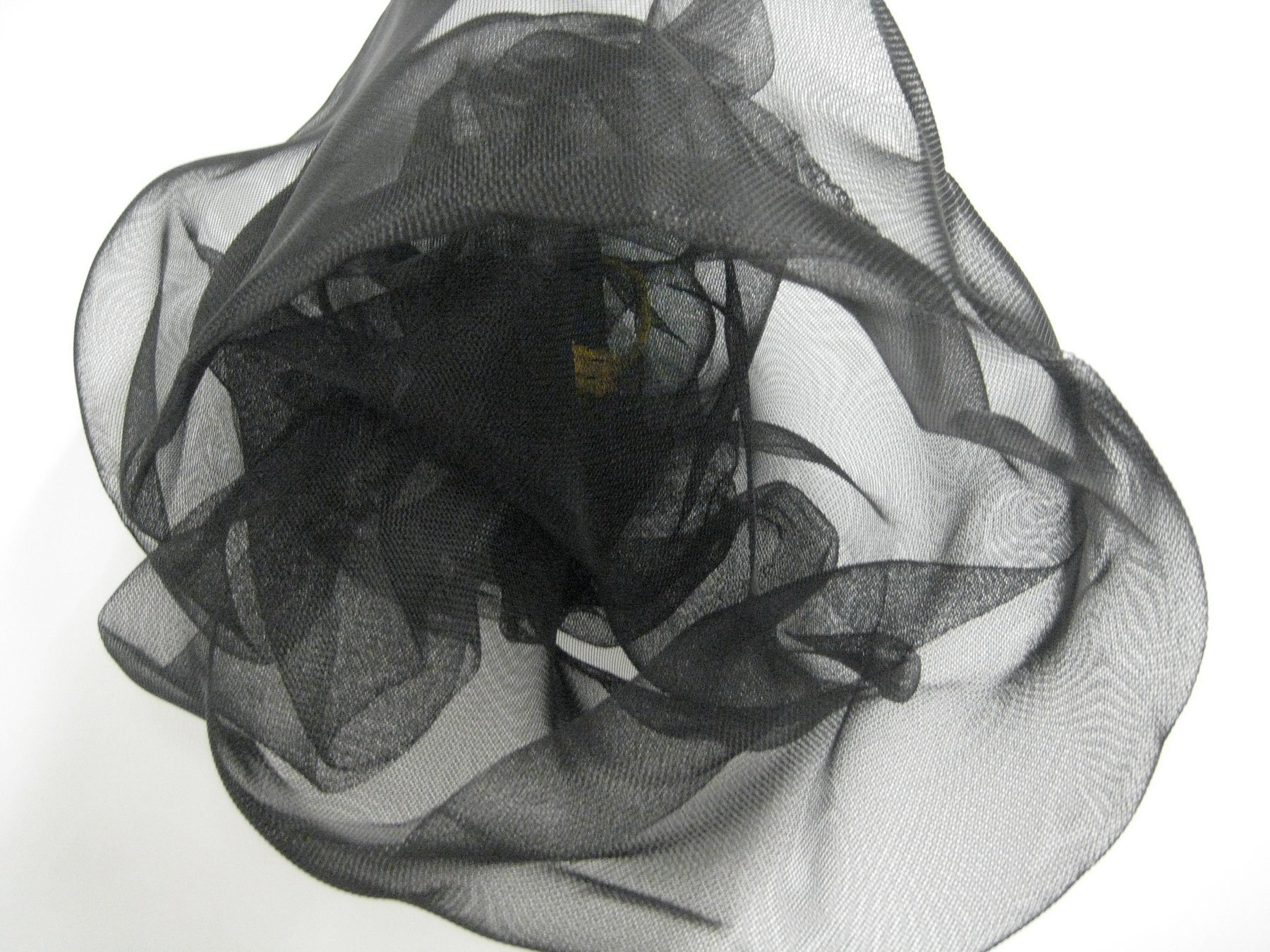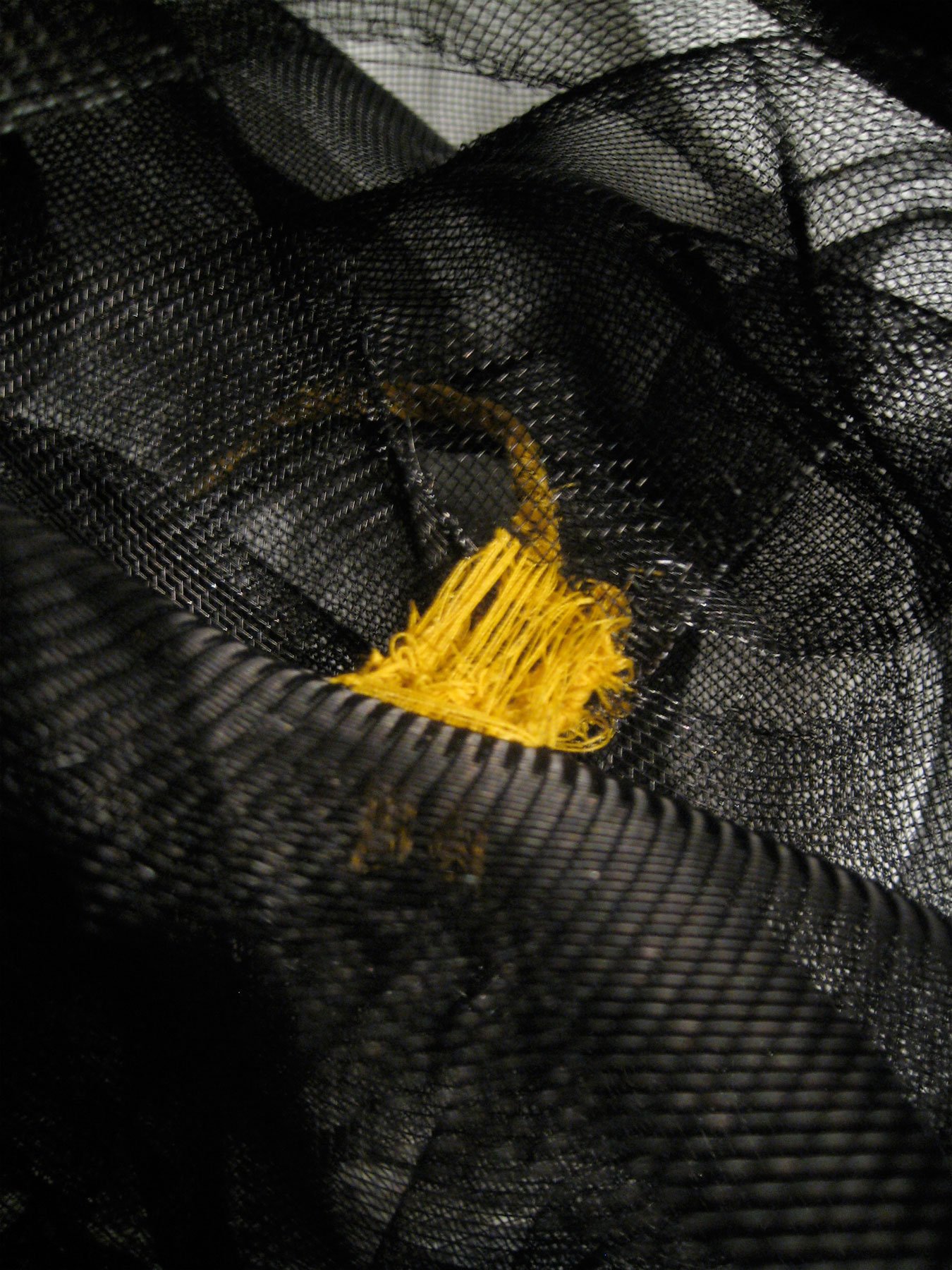Infrastructure—encompassing the act of supporting, the undergirding for creation, and the workforce maintaining our unsustainable global practices—informs the concepts, imagery and materials of my sculptures and installations. The intersecting histories and consequences of omnipresent apparatuses—from taxation to electrical grids to the maintenance of racecraft (Fields and Fields)—are foundational to the tapestry of human existence and, in the US, are deeply influenced by technocracy, the interplay between private and public power, and the journeys of individuals struggling against social inequities. To address, surface and visualize the complex layers within the attempts to organize humans and their environments, which consistently deprioritize the full spectrum of the human experience and the humanity of all, I create from amalgamations of industrial and refuse materials, textiles and sewing, photography, and combining manual and digital approaches.
Genius/Genus Bar
Genius/Genus Bar highlights ‘genius’ as a superficial language unit that legitimizes resource investment into people, entities and practices which have gained attention and desirability via historic, inherited and obfuscated means. It is the first in a series of soap-on-a-rope sculptures in the shape of words which I view as being applied so broadly and weaponized so frequently that their meanings have not only evaporated but have become equivalent to toxic gasses harming human potential. ‘Genus’—adding context that the state of being elevated can only exist within hierarchy—is a rank within biological taxonomy, whose 18th century origins include the concept of four “varieties” of humans, thus playing a foundational role in the creation of race.
The color and material (soap with glutathione which is the main ingredient in skin-whitening products) have been chosen to reinforce the racial and hierarchical aspects entangled in every capitalist embodiment—the “conjoined twins,” Ibram X. Kendi’s description of the relationship between capitalism and racism. As a person of Asian descent, I am both intimately familiar with the colonialist and assimilationist-driven ideals of femininity and cleanliness, while, at the same time, have had many run-ins with the pedestal of smart, which often equates to high status, high salary, and ultimately safety into old age.
See installation images of this work by viewing documentation of Hedges and Ledgers.
Genius/Genus Bar
13” x 4” x 2"
Soap including glutathione (skin whitening soap), rope
2021
Return and Schedule Self-Interest
Inspired by the conditions and interactions in my own life, I created Return and Schedule Self-Interest which is the first in a series focused on the US taxation structure. Whether or not one files a 1040 to report their participation in labor and mechanisms of material conditions, this system, built from demographically-biased justifications and assumptions, impacts everyone. Tax forms are embedded with formulas defining and assigning monetary advantages and penalties to certain care-giving relationships, types of labor, and characteristics of people, and, thus, maintain and accelerate long-standing hierarchies. Through textiles and scale, the work speaks to the emotional, and often traumatic impact, that this notoriously boring and onerous, yet potent and ever-present, apparatus has on us individually and collectively. Eleven panels inspired by Form 1040 and the Schedules that support it are installed such that viewers can stand sandwiched between—thus alluding to my racialized location—pages of a system that perpetuates the black and white “logic” and poles of our society.
See more installation images of this work by viewing documentation of Hedges and Ledgers.
Return and Schedule Self-Interest
linen, canvas, thread, chain
Dimensions variable. Each panel is 62” x 49” x 36”
2023.
Interstices
I seek to unpack the duality of contemporary society as a set of linear systems and strategies that organize, while controlled by, the nonlinearity of humans and nature. Marginality – the periphery and the transition between two spectra – results from this tension. Dirt and waste are fundamental to marginality. The anthropologist Mary Douglas describes: “Dirt…is never a unique, isolated event. Where there is dirt, there is system. Dirt is the by-product of a systematic ordering and classification of matter, in so far as ordering involves rejecting inappropriate elements.” Waste is similarly considered unwanted and unusable. Literal human refuse and the material debris of consumption culture are wastes innate to contemporary existence. Waste removal shapes public and periphery space – sewer systems, landfills, portable toilets – thus defining expectations of modern community development.
Although the visual understanding of the world becomes greater through satellite photos and endless webpages dedicated to the experience and statistics of such marginal spaces, physical access is still limited to a few traditional means – car, boat, plane. Access remains key in landscapes of technocracy and capitalism in which the signifiers of these ubiquitous systems are often visually marginalized. Wireless devices facilitate the invisible web of the contemporary but they themselves are not invisible. While biological cycles drive humanity, the technology and manufacturing industries function on the creation-obsolescence-abandonment cycle, further ensuring a landscape dominated by chemicals and materials whose environmental and social impacts are currently in the nascent stages.
Psychologically, the individual becomes progressively autonomous and anonymous as systems contort to celebrate constant self-reflection but through means of engaging in a limited set of processes and tools. Appropriation, reappropriation, and nostalgia result from high levels of cultural saturation, which is maintained by accelerating cyclical motion. Progress is thus increasingly defined by the desire at the circumference to steer off course, and by the relationship between the self-aware and the lacunae.
Interstices
Multimedia including aluminum, burlap, paint, honeycomb cardboard, studio detritus, acrylic
installation space approximately 50' x 80' x14'
2010
Commodified Now!
Commodified Now! was created as a tapestry for the Carpenter Center’s curved wall on which it is installed. The design is an amalgamation of the bar codes associated with the materials I purchased for the multi-sculptural installation in which this piece was shown. Completely hand sewn, this piece was made of burlap and aluminum mesh and is an example of my interest in combining construction and textile materials.
Commodified Now!
Aluminum, thread, burlap
102” x 396”
2010
Great, Pacific Garbage Patch
Great, Pacific Garbage Patch
honeycomb cardboard, nylon
36" x 62" x 30"
2010
The Society of the Post-Consumption
The Society of the Post Consumption
acrylic, refuse of studio work and found objects from 2006-2010
20” x 72” x 96”, 32" x 42" x 15", 26" x 36" x 12"
2010
International Figure
International Figure
aluminum, concrete
139” x 50” x 32”
2010
Yield
Yield
dimensions variable
burlap, thread, paint
2010
The Web
The Web
polyethylene sheeting, fiberglass tape, nylon string
144" x 144"
Installation for the set of “Lab Or,”
a site-specific performance at The Lab,
a non-profit gallery in San Francisco.
July 23 - August 2, 2008
Sweatshop
Sweatshop
mailbags from China and Japan,
polyethylene mesh, thread, needles, pins
22" x 15" x 3"
2009
Lightbulb
Lightbulb
vinyl, aluminum
41" x 35" x 35"
2009
Yellow Anatomy
Yellow Anatomy
burlap, latex paint, hardware cloth
48" x 48" x 60"
2009
Yellow Anatomy expresses my interest in what I call our racial-bucket system and my identity and existence in it. This sculpture is created from hardware cloth whose cut outs and dimensions use my height and limb lengths as base values. The hardware cloth is upholstered by painted burlap and contorted and hand sewn.
Get Plugged Into the Grid
Get Plugged Into The Grid
aluminum, thread
20" x 20" x 20"
2010
Pain Reliever
Pain Reliever
chicken wire, cotton
30" x 58" x 38"
2009















